
Research and News
News
-
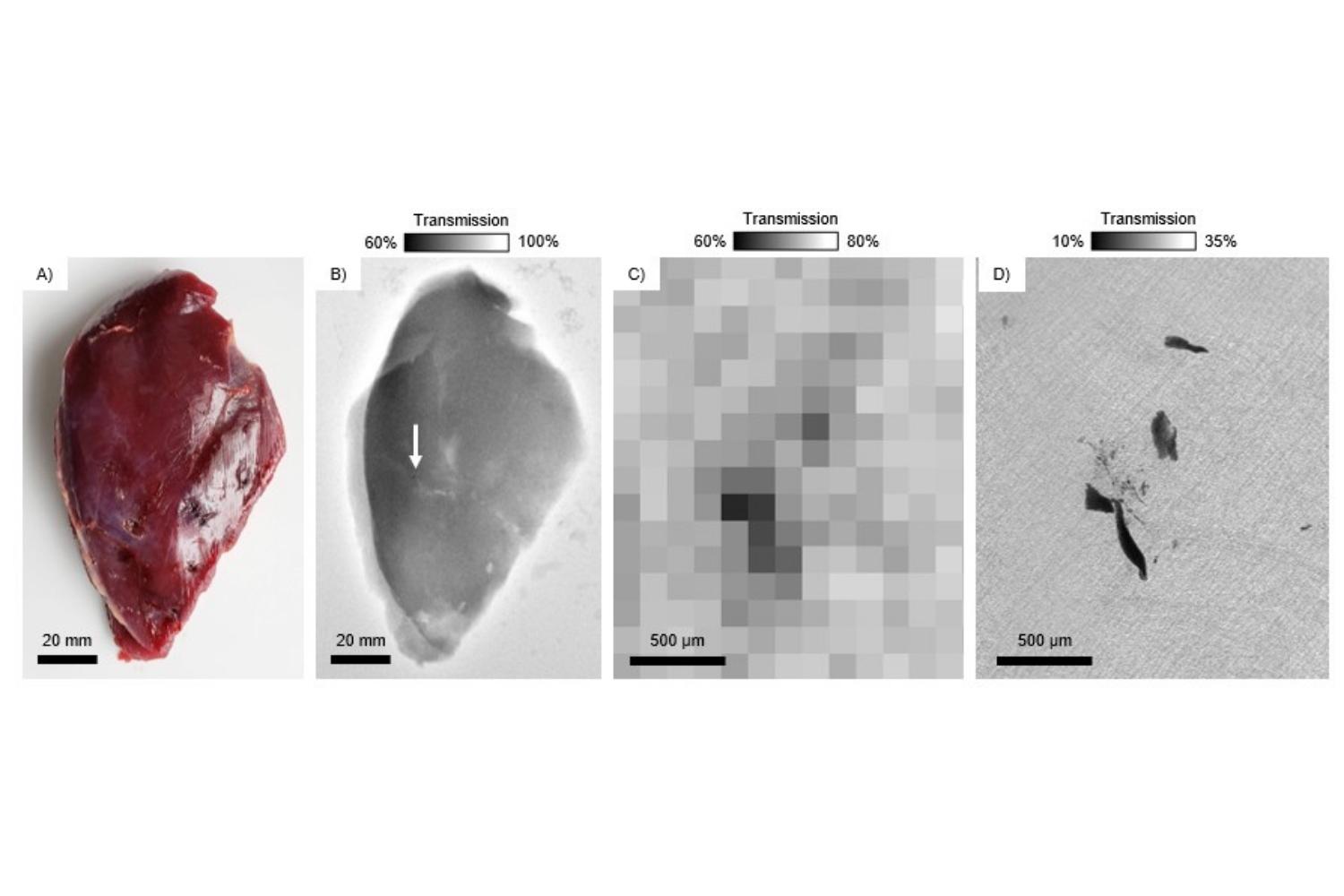
Posted on November 27, 2025News : New research reveals tiny lead fragments in hunted meat pose health risk
This fall, when Adam Leontowich headed to southeast Saskatchewan to hunt whitetailed deer and ruffed grouse, he once again opted for lead-free ammunition -- cartridges with copper bullets for his .308 rifle and shells with steel pellets for his 12-gauge shotgun. It’s the fourth hunting season that he’s done so.
-
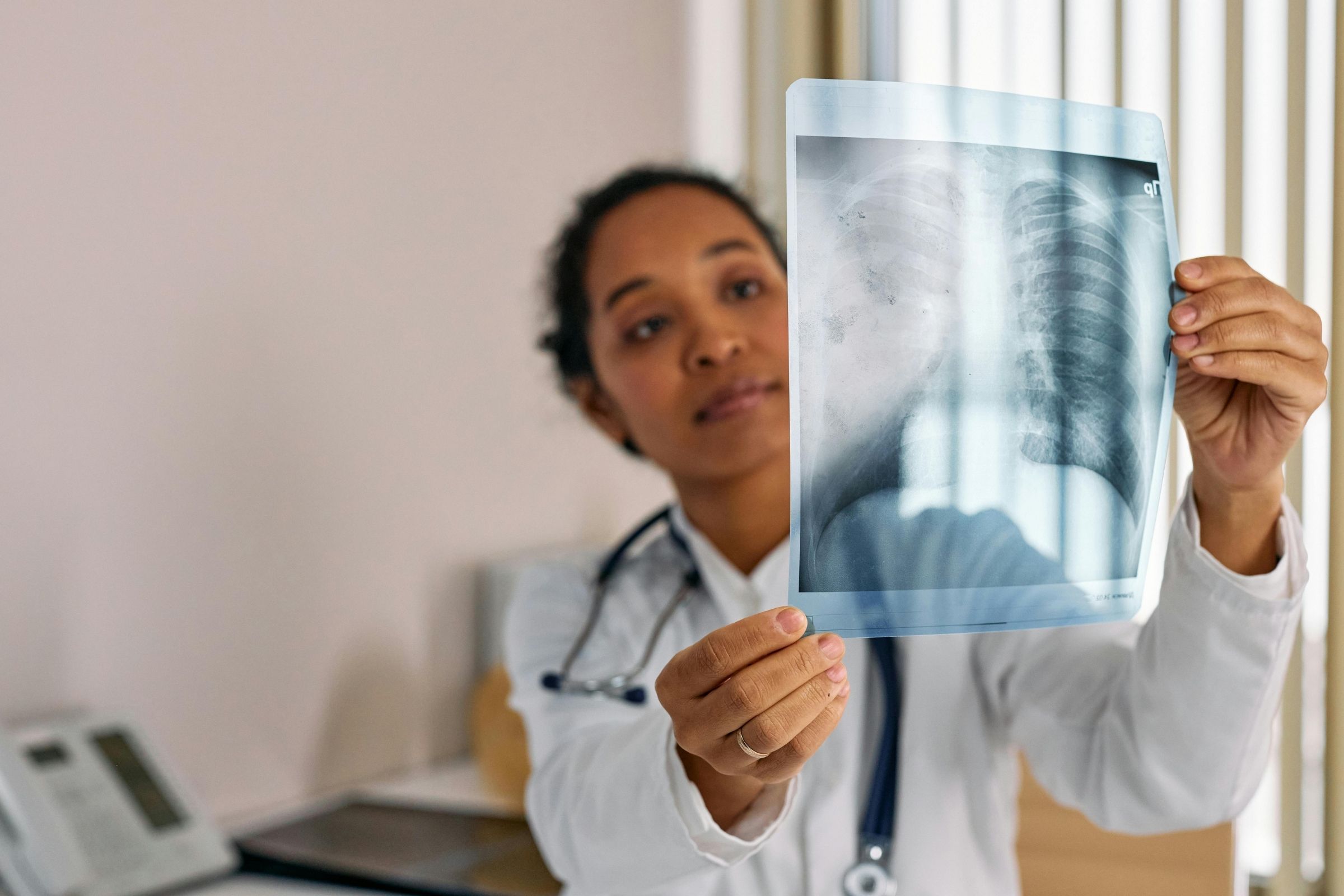
Posted on October 08, 2025News : 3D-printed lungs could improve disease prevention and treatment
Lung diseases like tuberculosis and cystic fibrosis can be difficult to treat. In part, that’s because the two-dimensional models researchers use to study the diseases don’t accurately reflect the shape of human lungs -- and animal models don’t behave like humans do when they encounter disease. University of Saskatchewan (USask) researchers from the Vaccine and Infectious Disease Organization (VIDO) and the College of Engineering are working to build a better model.
-

Posted on October 06, 2025News : Could zebrafish hold clues to detecting, preventing scoliosis in children and teens?
Dr. Brian Ciruna had no intention of studying scoliosis, a condition that causes unnatural curvature of the spine. However, the unexpected discovery about a decade ago that zebrafish also develop curved spines left him wondering what was causing the spine to bend and whether there was some connection to the human form of the disease. It turns out that this small, minnow-like fish has a lot to tell researchers about a condition that affects three to four percent of children and young teens in Canada. Despite its prevalence, we know very little about the underlying causes of scoliosis in humans, says Ciruna, Senior Scientist and Head of the Developmental and Stem Cell Biology Program at the Hospital for Sick Children (SickKids) in Toronto and professor in the Department of Molecular Genetics at the University of Toronto. Zebrafish, it turns out, have human-like backbones, making them an excellent model for this research.
-
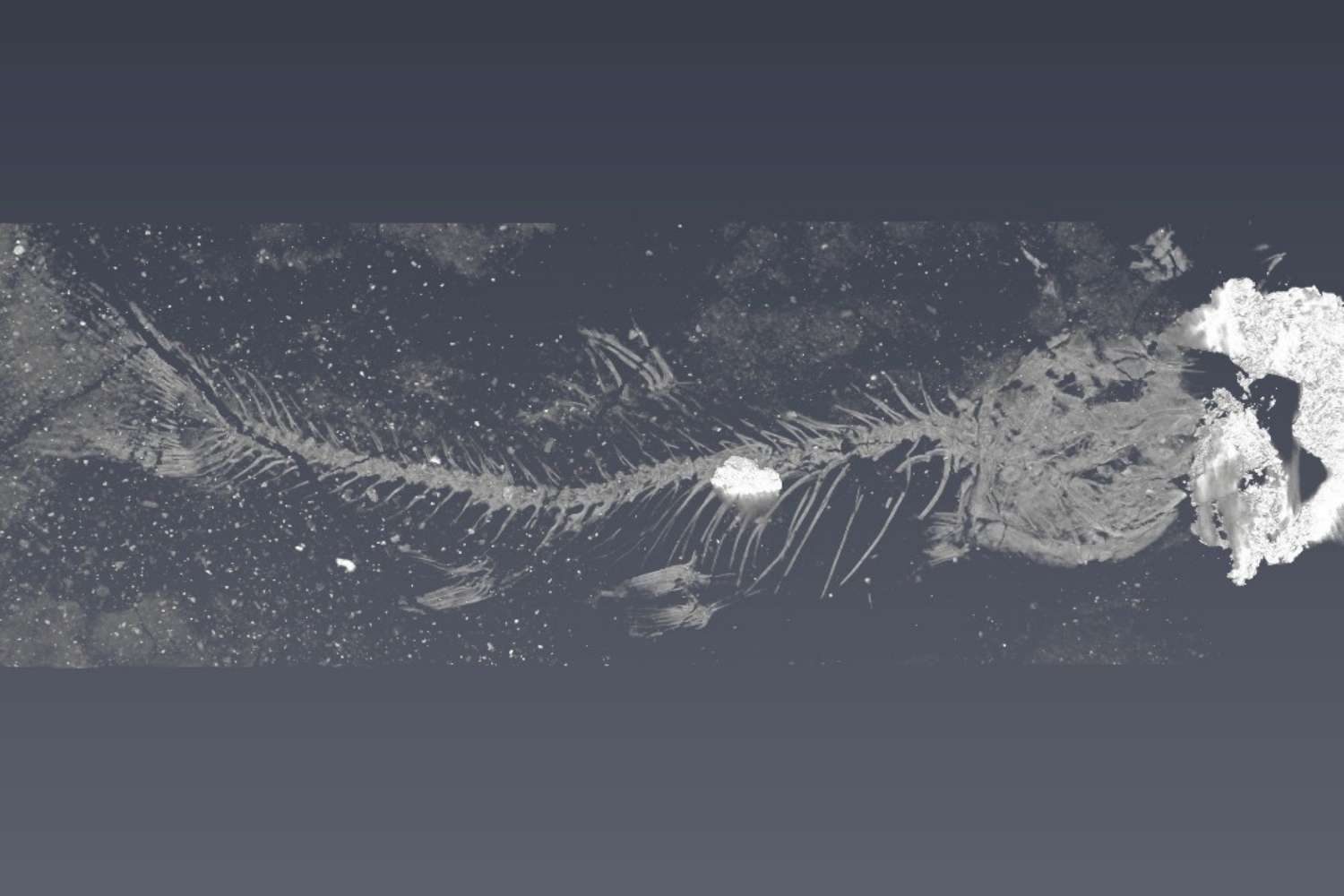
Posted on October 02, 2025News : New tiny prehistoric fish species unlocks origins of catfish, carp
The fossil of a tiny fish found in southwestern Alberta provides new insight into the origin and evolution of otophysans, the supergroup of fish that includes catfish, carp and tetras, which today account for two-thirds of all freshwater species. The specimen, studied by researchers at Western University, the Royal Tyrrell Museum of Palaeontology and international collaborators, is a skeleton of a fish about 5 cm long from the Late Cretaceous period (the same time period of the iconic Tyrannosaurus Rex, about 70 million to 66 million years ago.) A new kind of fish entirely, it is now named Acronichthys maccognoi. A study detailing the discovery was published today in the high impact journal, Science.
-
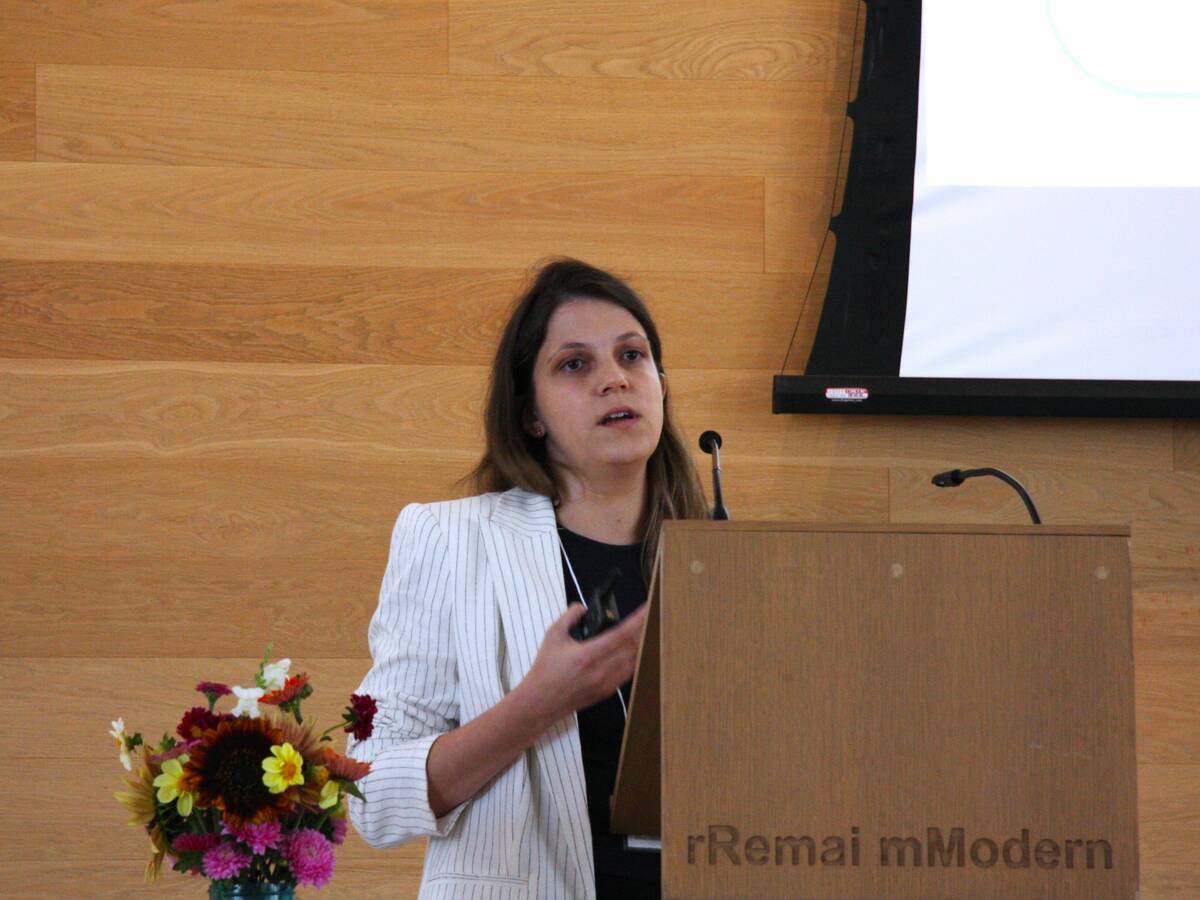
Posted on September 20, 2025News : Fusarium head blight mycotoxin detector in the works
Fusarium head blight (FHB) and the mycotoxin it causes, especially deoxynivalenol (DON), can be a serious economic detriment to producers. It reduces yield and grain grade, as well as contaminates the grain, making it dangerous for human and animal consumption. Sheila Andrade, a PhD student at the University of Saskatchewan, has been working on developing a method of detection to ease the struggles of producers, agronomists and industry. The objective of her work has been to employ synchrotron-based x-ray phase-contrast computed tomograph at the Canadian Light Source (CLS) to measure the morphological parameters of Fusarium-infected wheat kernels, to correlate those parameters with DON contamination, and also compare the morphological FHB symptom differences between durum and bread wheat.
-

Posted on September 11, 2025News : Toward cleaner oil sands processing
Canada’s oil sands are an important source of energy and economic activity, but the bitumen that is extracted there takes a lot of processing and cleaning before it can be transported to refineries to be converted into usable oil.
-

Posted on August 21, 2025News : Greening the production of cement
In Canada, it can seem like there are two seasons: winter and construction. Whether it’s repairing sidewalks and streets, or building new homes and apartments, much of this work uses cement – the key ingredient of concrete.
-
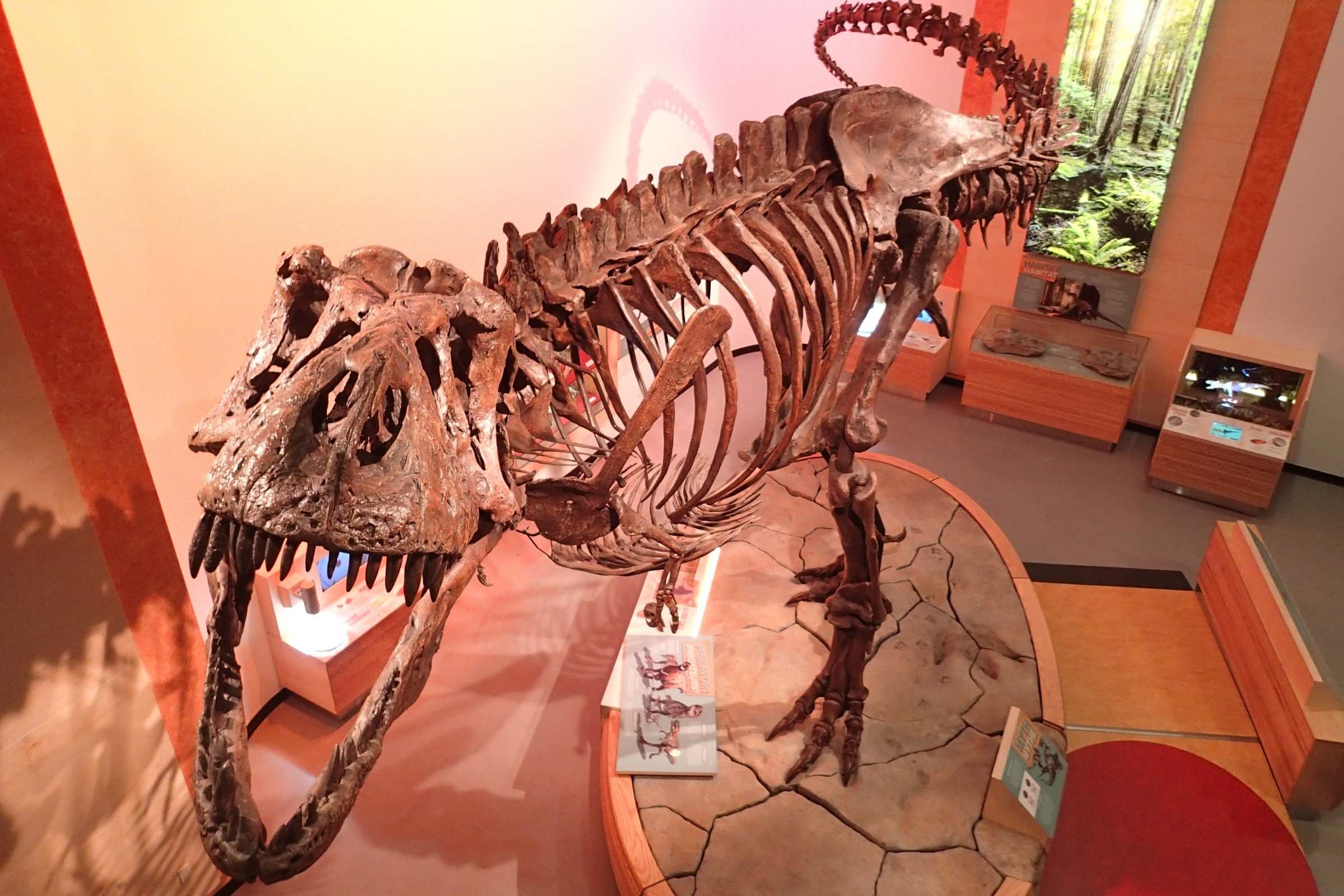
Posted on July 04, 2025News : Scotty’s rib: University of Regina PhD student examines preserved blood vessels in famous fossil
A University of Regina research team made some dino-mite discoveries about how dinosaurs may have healed from injuries when they examined the preserved blood vessel structures inside a rib bone from Scotty, the famous Tyrannosaurus rex unearthed in Saskatchewan in the 1990s. Their findings were recently published in Scientific Reports, an open-access journal that publishes original research from across the natural sciences, psychology, medicine, and engineering.
-

Posted on June 24, 2025News : Better heating method makes legumes easier to digest
While they have been part of our human diet for centuries, legumes like peas and beans are ultimately seeds for the next generation of plants. To protect themselves from being eaten by animals and insects, they contain “antinutrients” that are hard for animals – and humans – to digest.
-
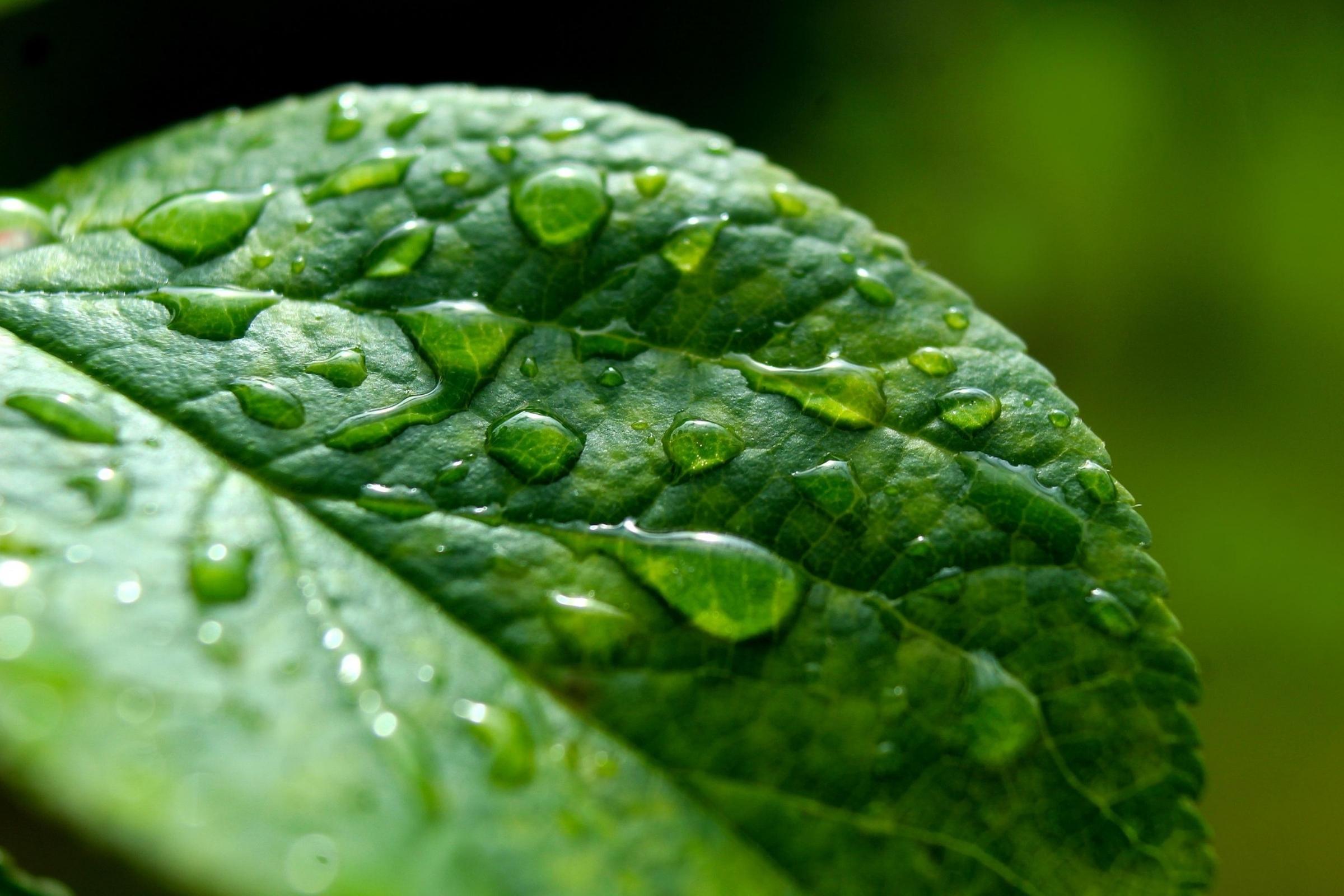
Posted on April 22, 2025News : Plant leaves inspire design of improved fuel cell
Hydrogen fuel cells convert hydrogen and oxygen into electricity, heat, and water. Because this conversion process doesn’t generate any carbon emissions, fuel cells are seen as a valuable source of green energy that could be key in addressing climate change.
-

Posted on March 28, 2025News : Improving steel pipelines for safe transport of hydrogen
Hydrogen is increasingly gaining attention as a promising energy source for a cleaner, more sustainable future. Using hydrogen to meet the energy demands for large-scale applications such as utility infrastructure will require transporting large volumes via existing pipelines designed for natural gas.
-

Posted on December 09, 2024News : New type of battery could outlast EVs and still be used for grid energy storage
There’s a big push underway to increase the lifespan of lithium-ion batteries powering EVs on the road today. By law, in the US, these cells must be able to hold 80% of their original full charge after eight years of operation.
-
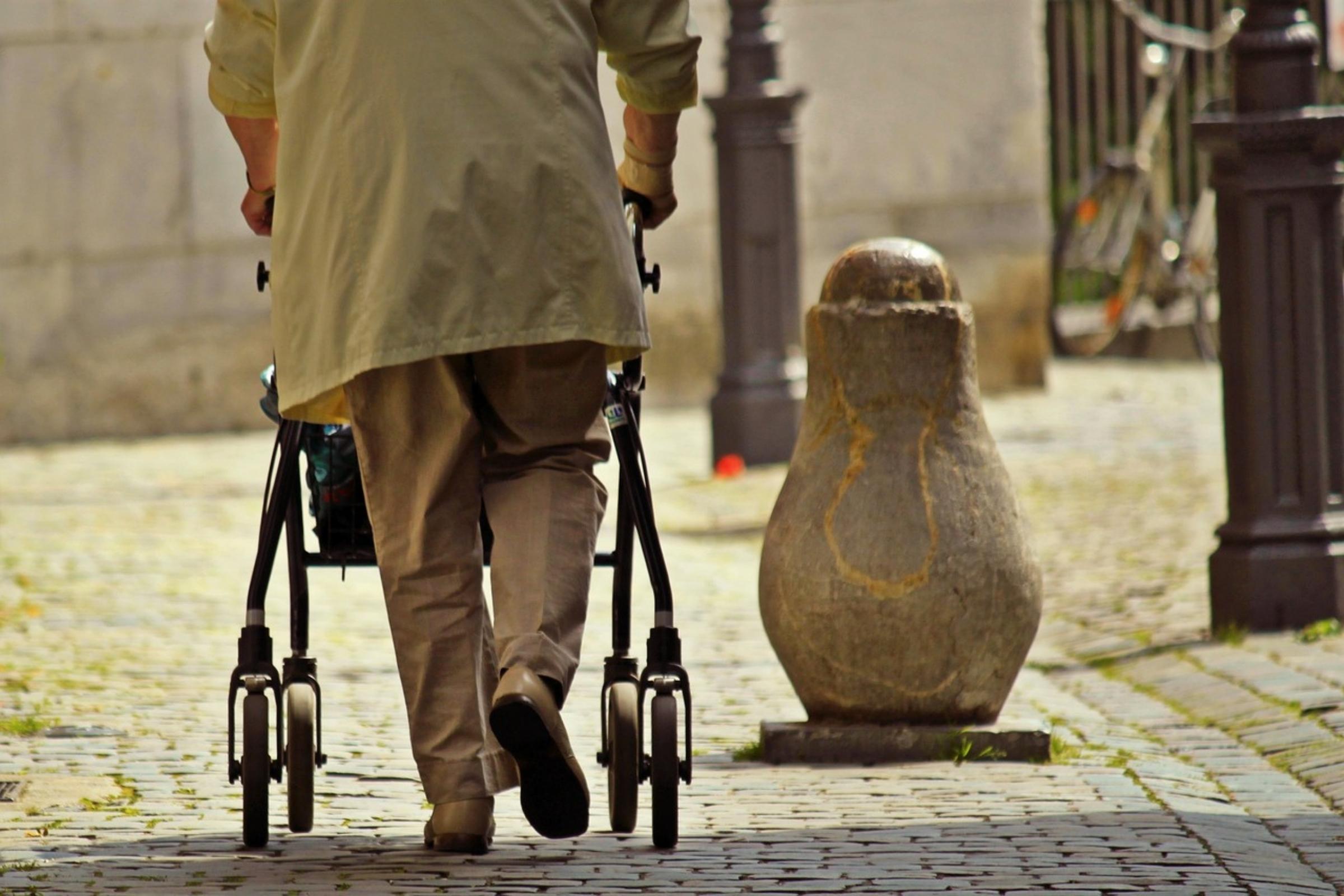
Posted on November 29, 2024News : Detecting osteoarthritis before patients need joint replacement
An imaging technique currently available only at synchrotrons like the Canadian Light Source at the University of Saskatchewan (USask) could one day enable doctors to detect osteoarthritis while patients can still be treated with medication – before they require joint replacement -- thanks to research by USask scientist Brian Eames and colleagues.
-
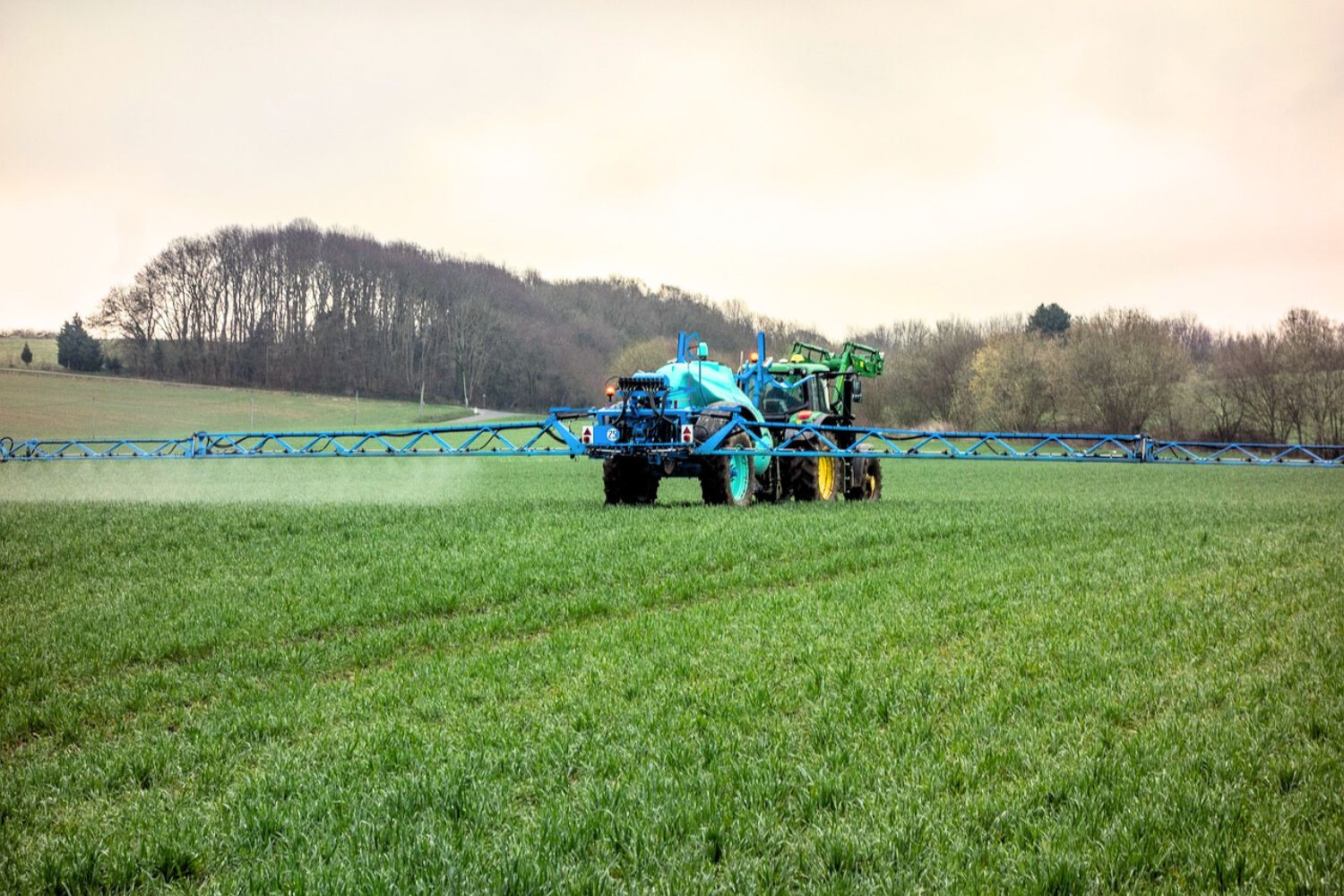
Posted on July 24, 2024News : Finding solutions to problem of clumping in potash
When powdered products like sugar, salt, or instant coffee are exposed to moisture, they form clumps and become much harder to use. The same thing happens to potash-based fertilizers and other potash products, where clumping can lead to industrial and agricultural waste. That’s why Saskatchewan researchers are taking a closer look at studying why clumps form in powdered products and what can be done to avoid this.
-
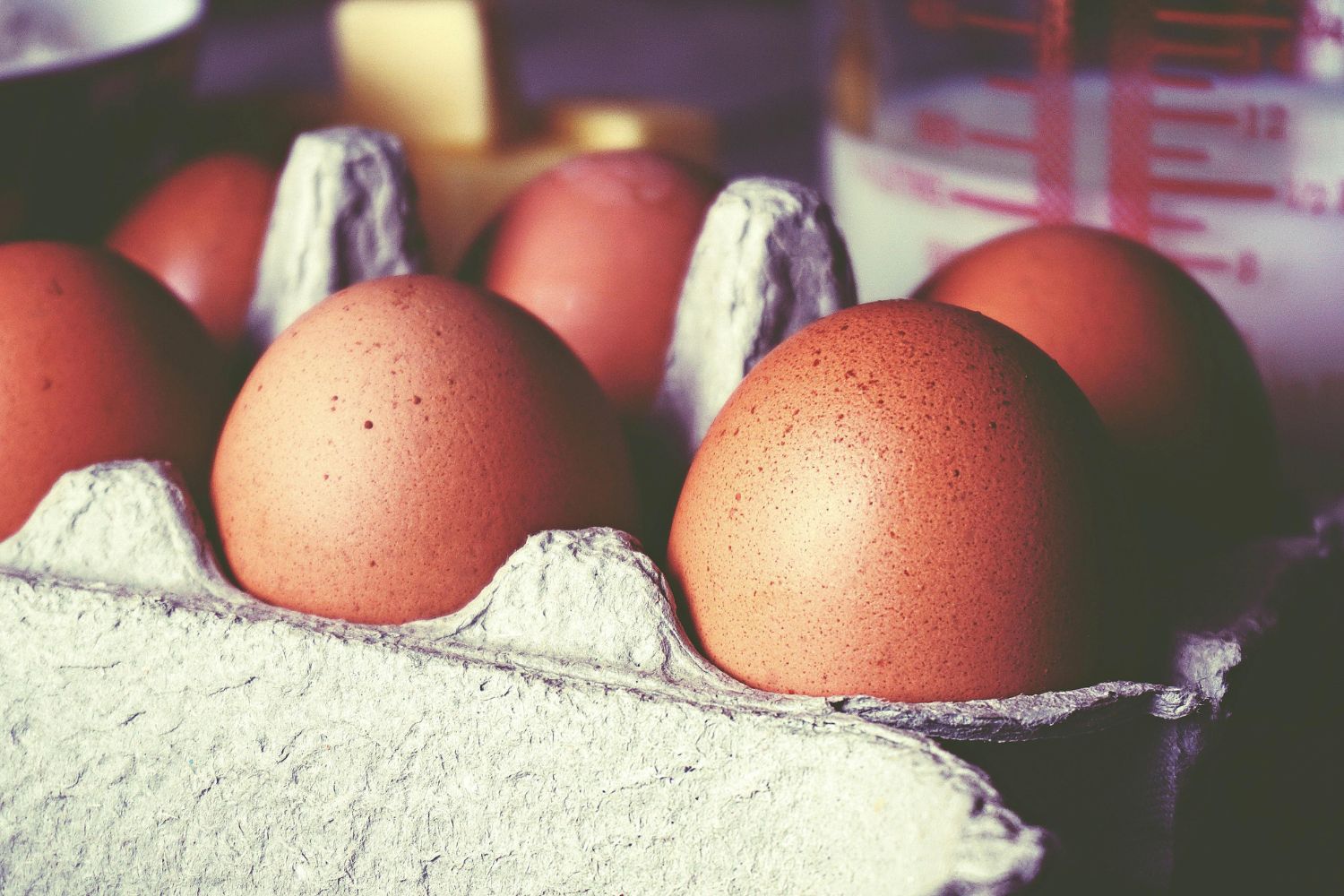
Posted on June 06, 2024News : Ensuring we have safe eggs to eat
Scientists with the University of Saskatchewan (USask) used the Canadian Light Source (CLS) at USask to study a promising new technique for decontaminating eggs and recently published their findings.
-
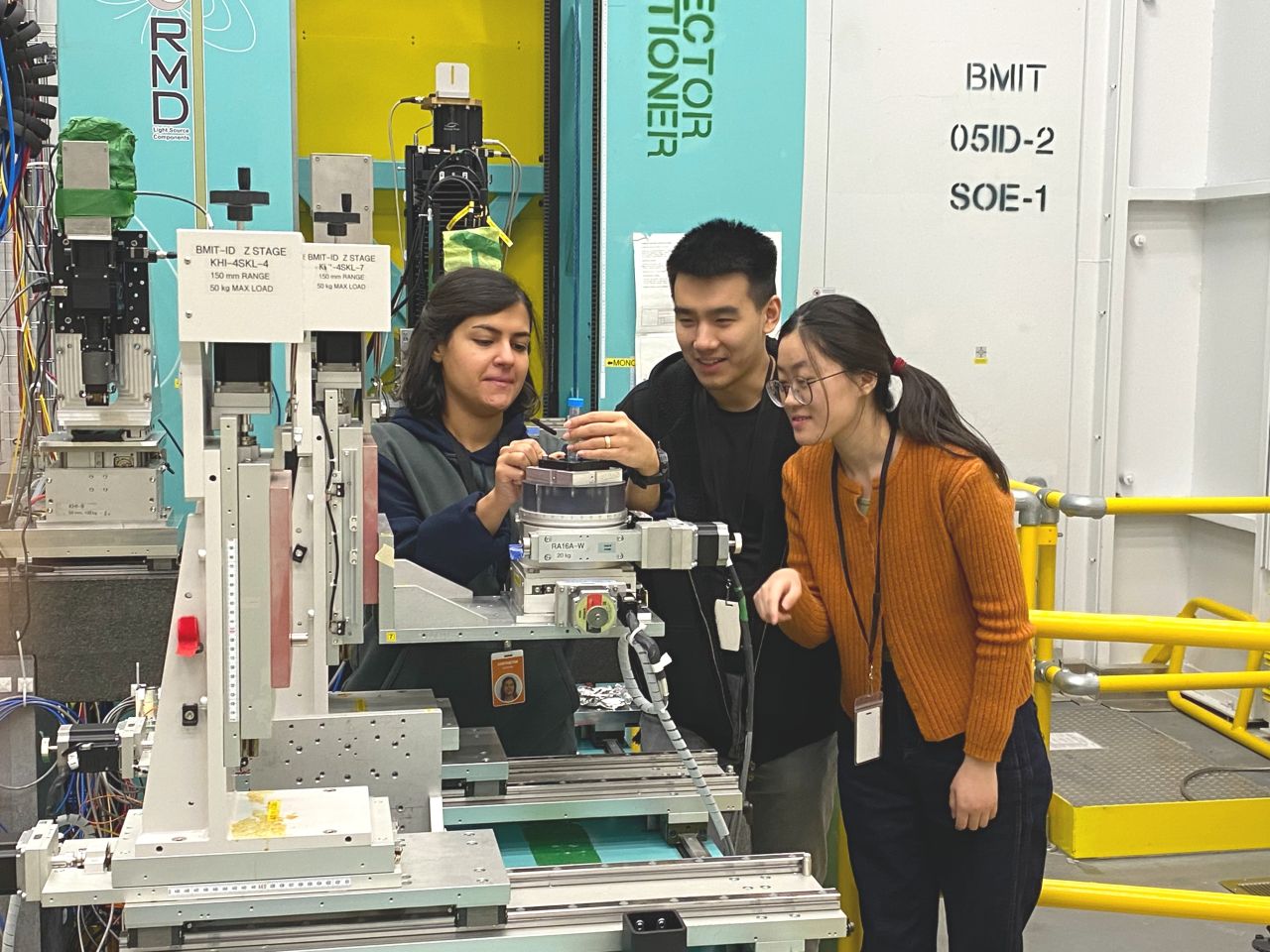
Posted on May 15, 2024News : USask researchers are looking to address the availability of tissues with tissue engineering technology
For the many people who suffer from severe tissue or organ damage, transplantation is the gold standard of treatment methods, but the availability of tissue and organ transplants is limited and wait lists can be long. Dr. Daniel Chen, PhD student Xiaoman Duan, and MSc student Naitao Li, researchers in the University of Saskatchewan’s Division of Biomedical Engineering in the Department of Mechanical Engineering (USask College of Engineering), are looking to address this issue using tissue engineering technology. By creating tissue and organ substitutes, this process could help permanently solve the problem of shortages of donor tissues and organs. The USask researchers have used the BMIT-ID beamline at the CLS to look at 3D-printed hydrogel structures called scaffolds, which are a promising advance in tissue engineering. These scaffolds can be created with properties that mimic a body’s natural tissue extracellular matrix, providing a platform for cell growth and oxygen and nutrient transportation within healing tissues or organs. The researchers are specifically investigating how the hydrogel scaffolds help the regeneration process of damaged nerve tissue, and how they degrade. A better understanding of how hydrogel scaffolds and nerve tissue interact will provide researchers with improved success in clinical treatment of damaged tissues and organs.
-
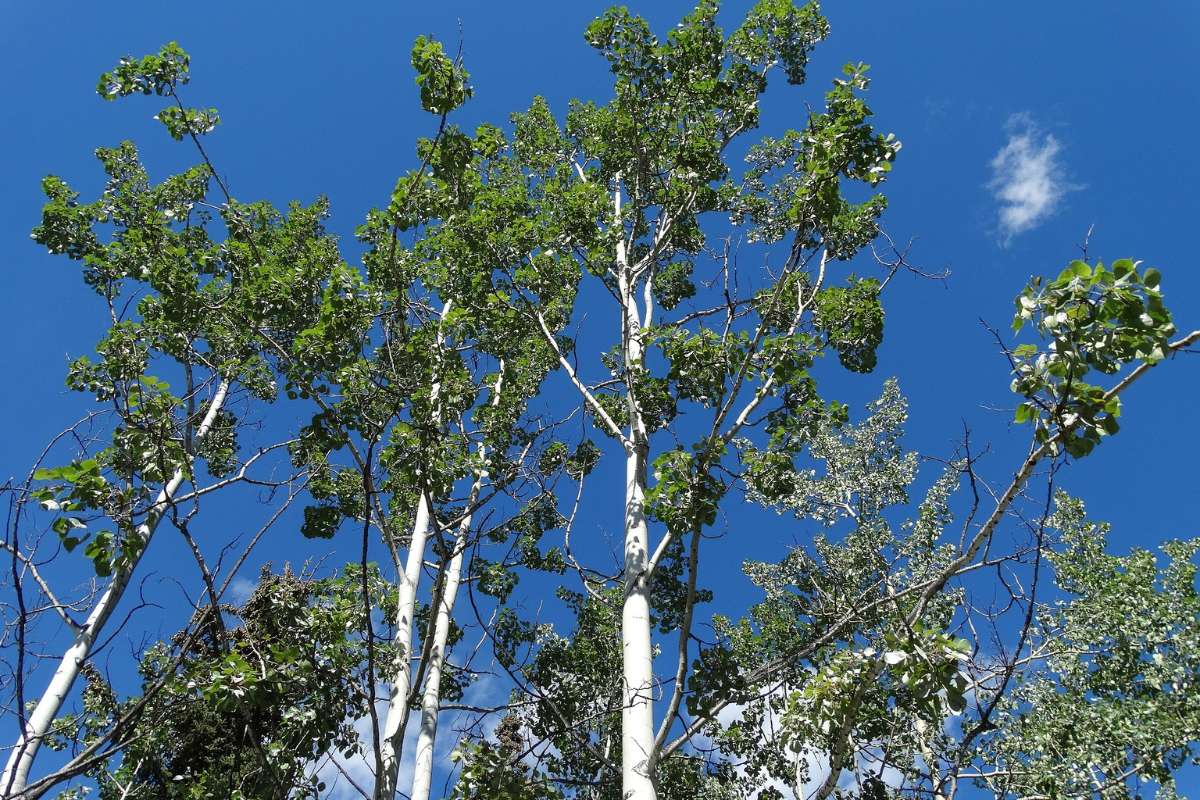
Posted on January 09, 2024News : Nature’s defense against changing climate
Balsam poplars are a medium-sized deciduous tree commonly planted as a wind shelter or for alley cropping, to create lanes for growing agricultural crops. Because of their economic value for these applications – and considering warmer, drier conditions brought on by climate change -- plant breeders are interested in coming up with new hybrid types that are even more resistant to drought.
-
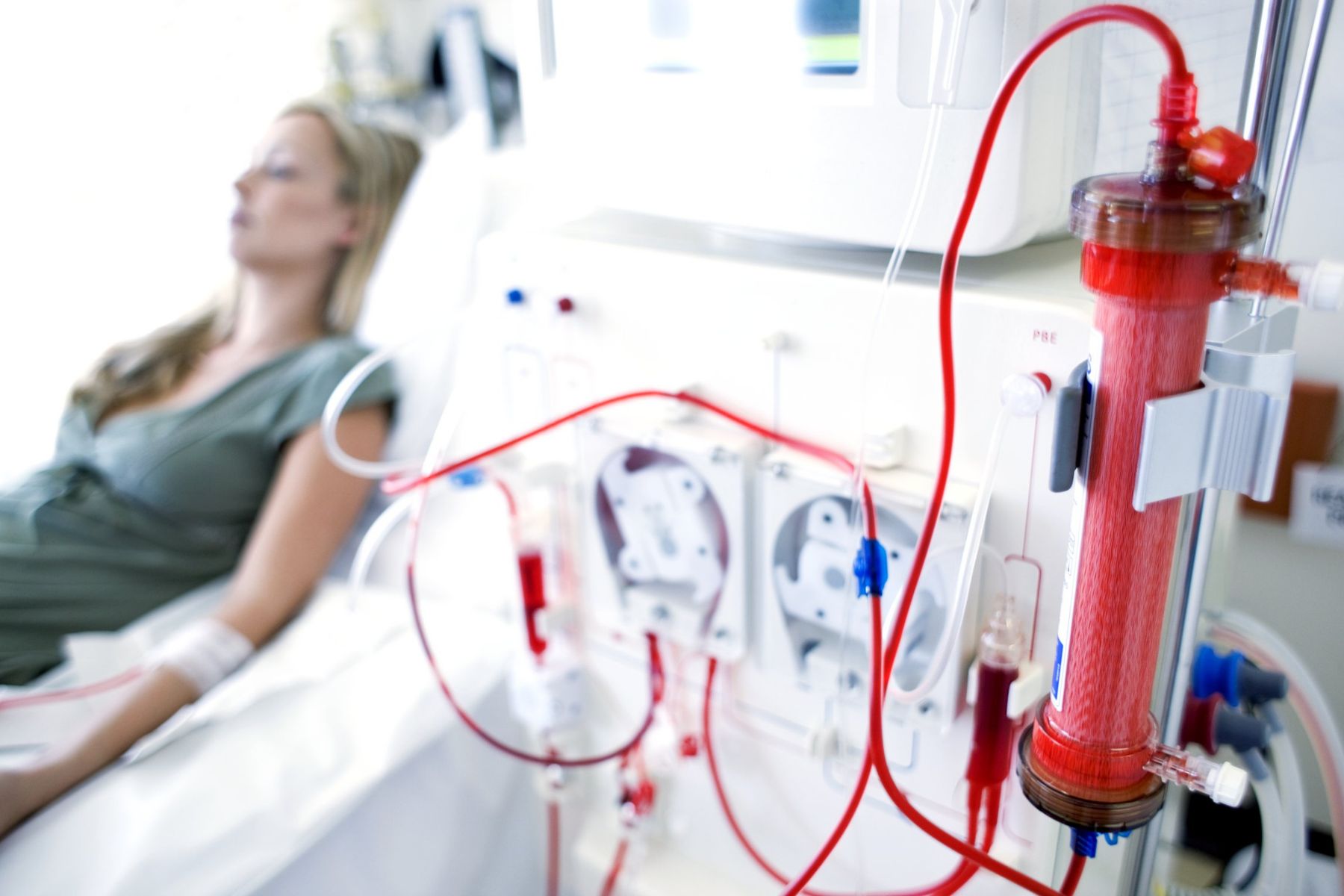
Posted on August 24, 2023News : Improved treatment for patients with kidney failure
Over two million people worldwide depend on dialysis or a kidney transplant, according to the National Kidney Foundation. In Canada, the number of individuals facing kidney failure has climbed 35 per cent since 2009 and nearly half (46 per cent) of new kidney disease patients are under age 65, according to The Kidney Foundation of Canada.
-

Posted on June 15, 2023News : Corn protein key to better texture in plant-based meat substitutes
Sales of plant-based meat products have levelled off in recent years, at least in part because current offerings lack the texture or mouthfeel of a nice T-bone steak or chicken breast.
-
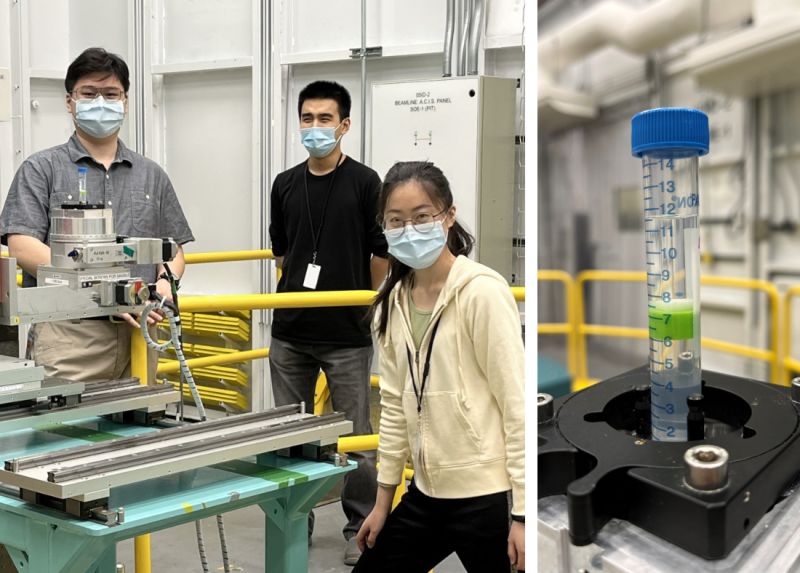
Posted on June 08, 2023News : USask researchers develop a method to visualize tissue scaffolds
Researchers from the University of Saskatchewan want to develop a method to visualize the internal structure of hydrogel scaffolds that are used to regenerate tissue. Using our BMIT beamline, they were able to scan the internal structure of their samples without cutting them open first, which makes their results more accurate. This detailed data will help the team to develop and test a new method for assessing scaffolds. “With an effective method, we can try to design and manufacture more delicate structures such as blood vessels and then evaluate their structures and mechanical performance as time goes on to ensure that they work as expected,” said Naitao Li, a USask MSc student on the research team who is working alongside Prof. Daniel Chen with the USask College of Engineering. Synchrotron imaging is non-invasive, as well as more accurate and faster than traditional imaging methods, explained Li. The team hopes to develop a method to visualize the scaffolds that are to be implanted in bodies. If successful, this could one day benefit patients who need tissue regeneration treatments.
-

Posted on November 02, 2022News : New bone imaging technique could lead to improved osteoporosis treatment
More than 2.3 million Canadians are affected by osteoporosis, resulting in billions of dollars in economic burden and incalculable suffering. A research team from the College of Medicine at the University of Saskatchewan has developed a new approach to imaging that detects changes in bone tissue far more quickly than bone densitometry scans, the method currently used in health care. While the study was done using a rabbit model, the results could lead to improved drug treatment in humans with osteoporosis.
-
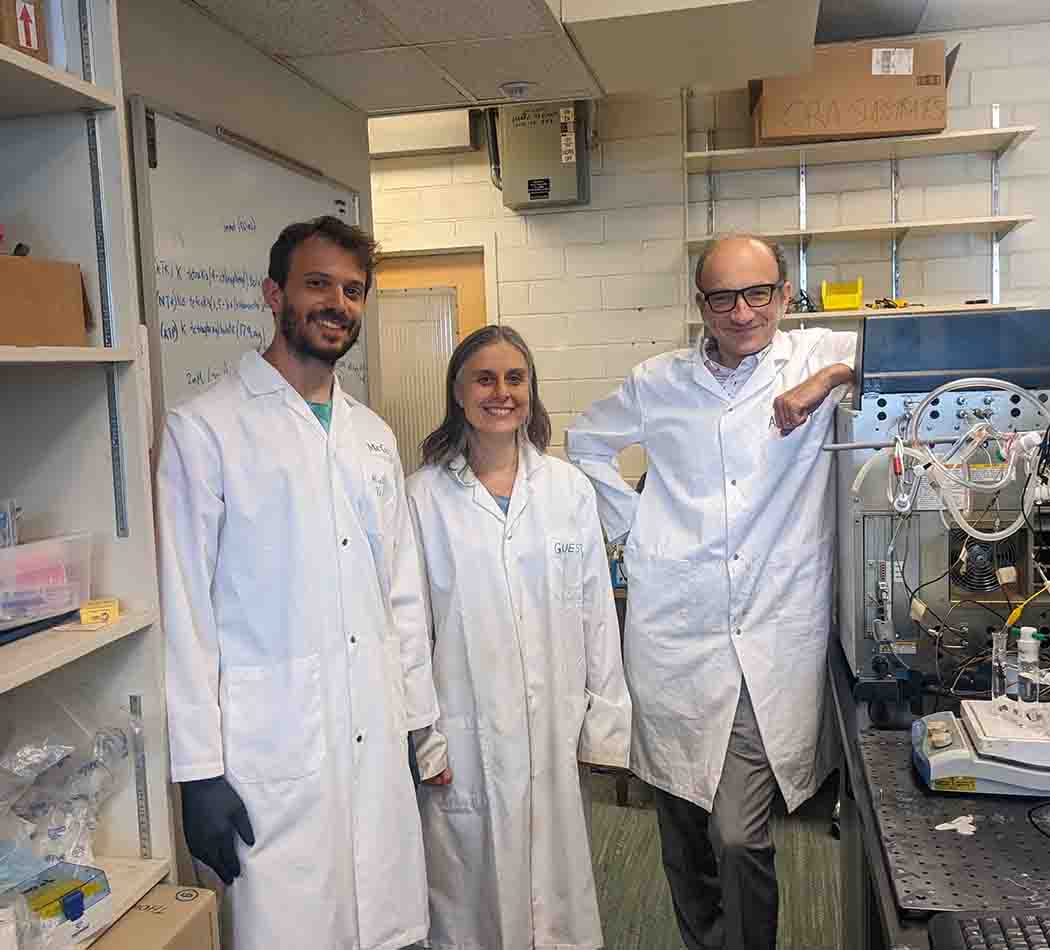
Posted on September 13, 2022News : Producing hydrogen from seawater
In her research on bone tissue engineering, Dr. Marta Cerruti has worked for years with graphene, a single sheet of carbon atoms with incredible properties – electrical conductivity and the ability to support tremendous weight. Now, her quest to improve its qualities has opened the door to a possible solution to one of the challenges of producing hydrogen from seawater.
-
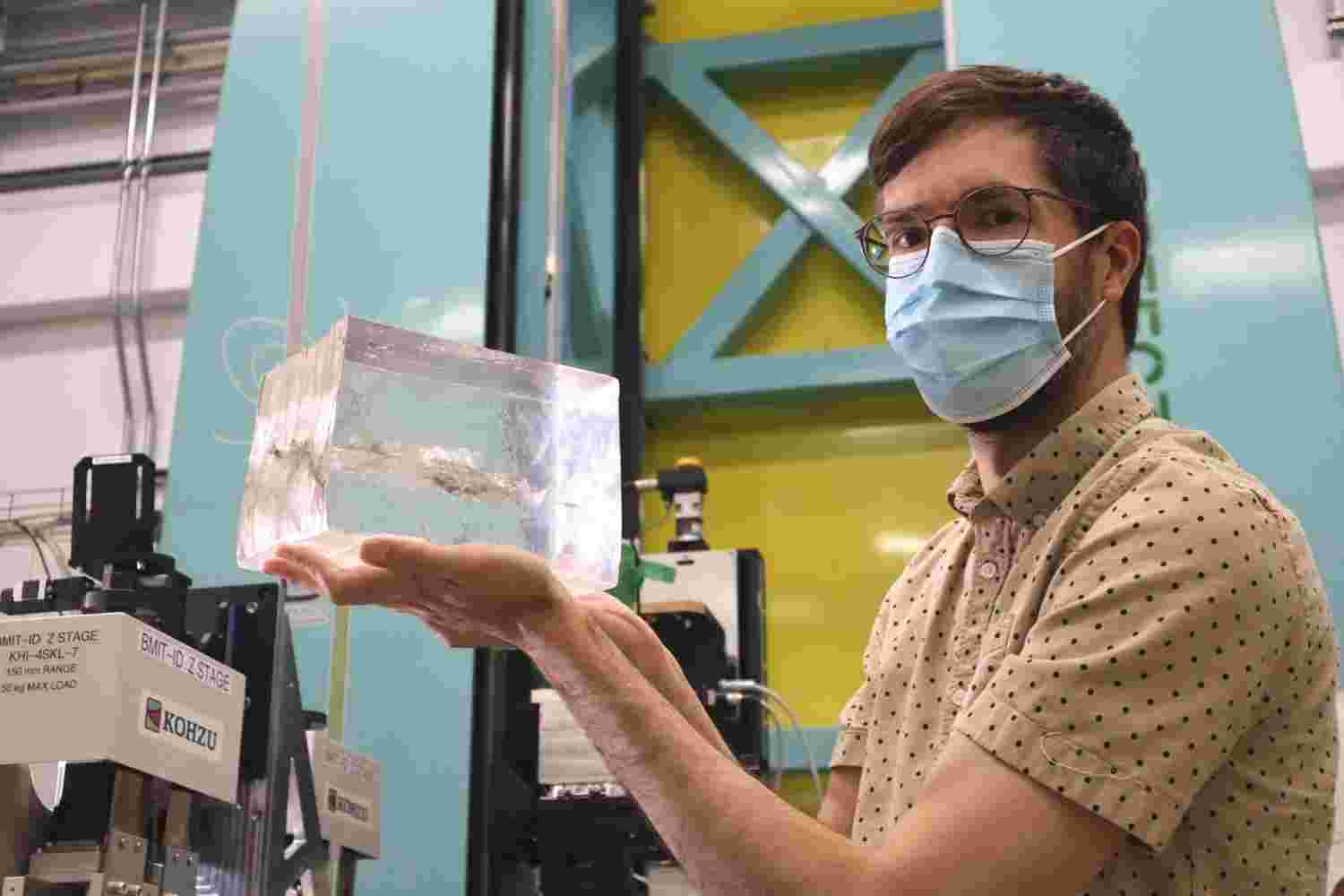
Posted on August 24, 2022News : New research on the risks of lead exposure from bullets used in big game hunting
The lead in some bullets used for hunting deer, moose, and elk is toxic to the humans who eat the harvested meat and to scavenger animals that feast on remains left in the .field
-
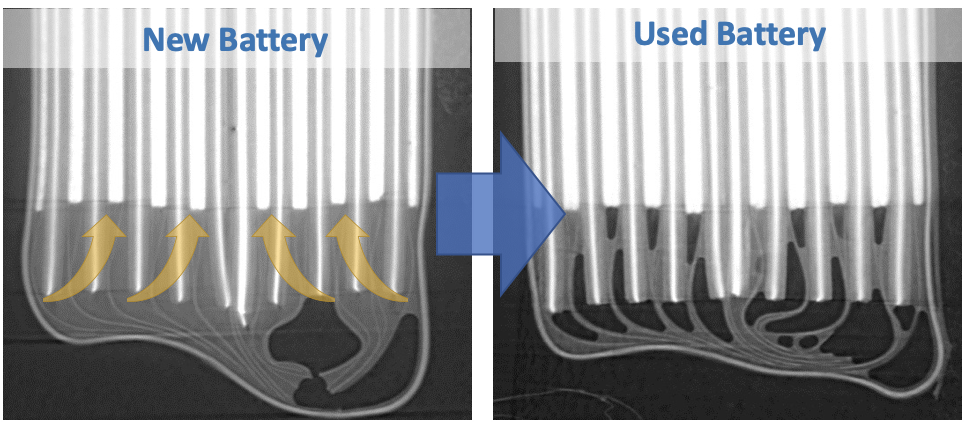
Posted on April 05, 2022News : X-rays capture ageing process in EV batteries
CLS researcher Toby Bond uses x-rays to help engineer powerful electric vehicle batteries with longer lifetimes. His research, published in The Journal of the Electrochemical Society, shows how the charge/discharge cycles of batteries cause physical damage eventually leading to reduced energy storage. This new work points to a link between cracks that form in the battery material and depletion of vital liquids that carry charge.
-
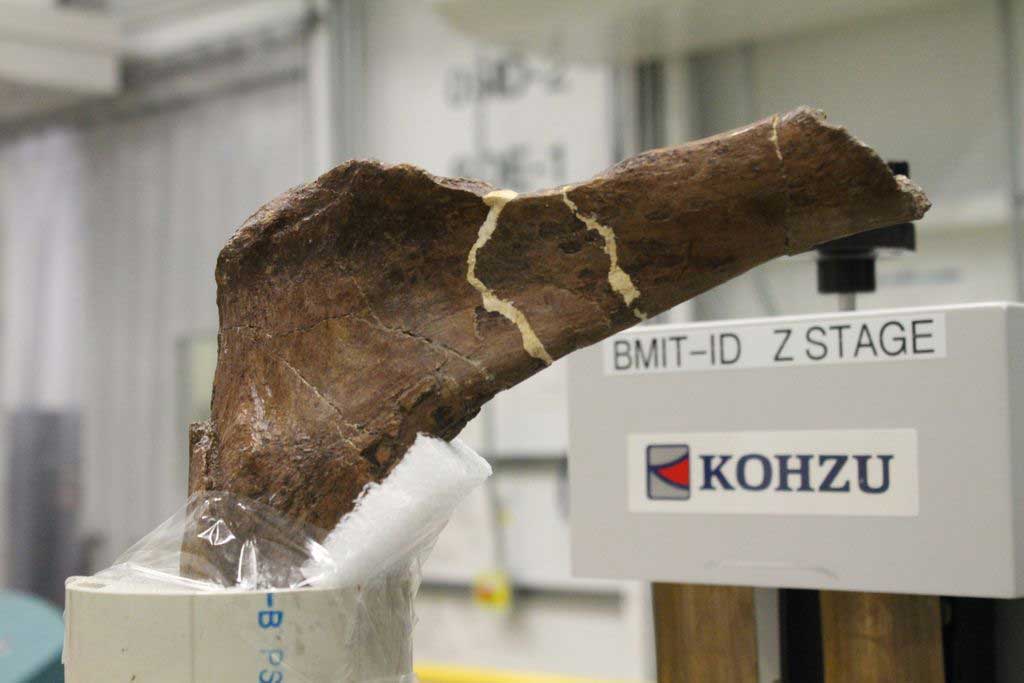
Posted on March 22, 2022News : Studying the world’s largest T. rex to learn about evolution
Scotty, the world’s largest T. rex, has captured the public’s attention since it was discovered in Saskatchewan in 1991. Now, researchers from the University of Regina (UofR) and the Royal Saskatchewan Museum (RSM) are taking a closer look at the dinosaur’s remains using the Canadian Light Source (CLS) at the University of Saskatchewan.
-
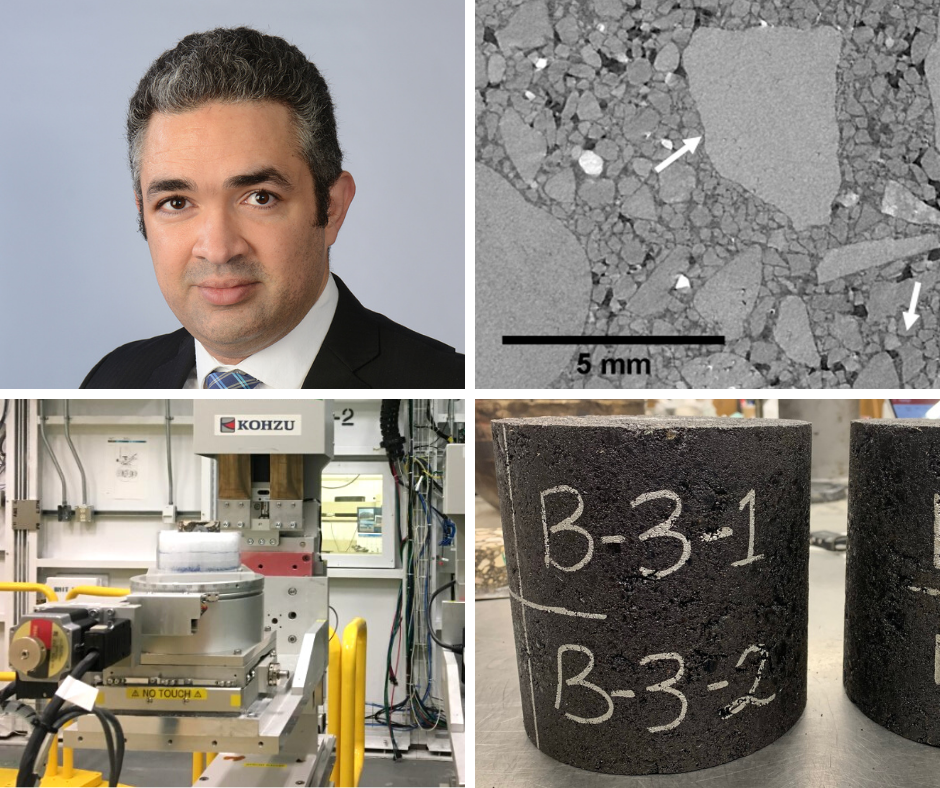
Posted on March 02, 2022News : Reducing potholes in cold climates
We all hate the potholes that appear on the roads as the weather starts to change. Haithem Soliman and Mai Alawneh with the College of Engineering at the University of Saskatchewan (USask) are conducting experiments to see if recycled materials can be used to build durable roads in climates with significant temperature swings between seasons, like those seen in Saskatchewan.
-
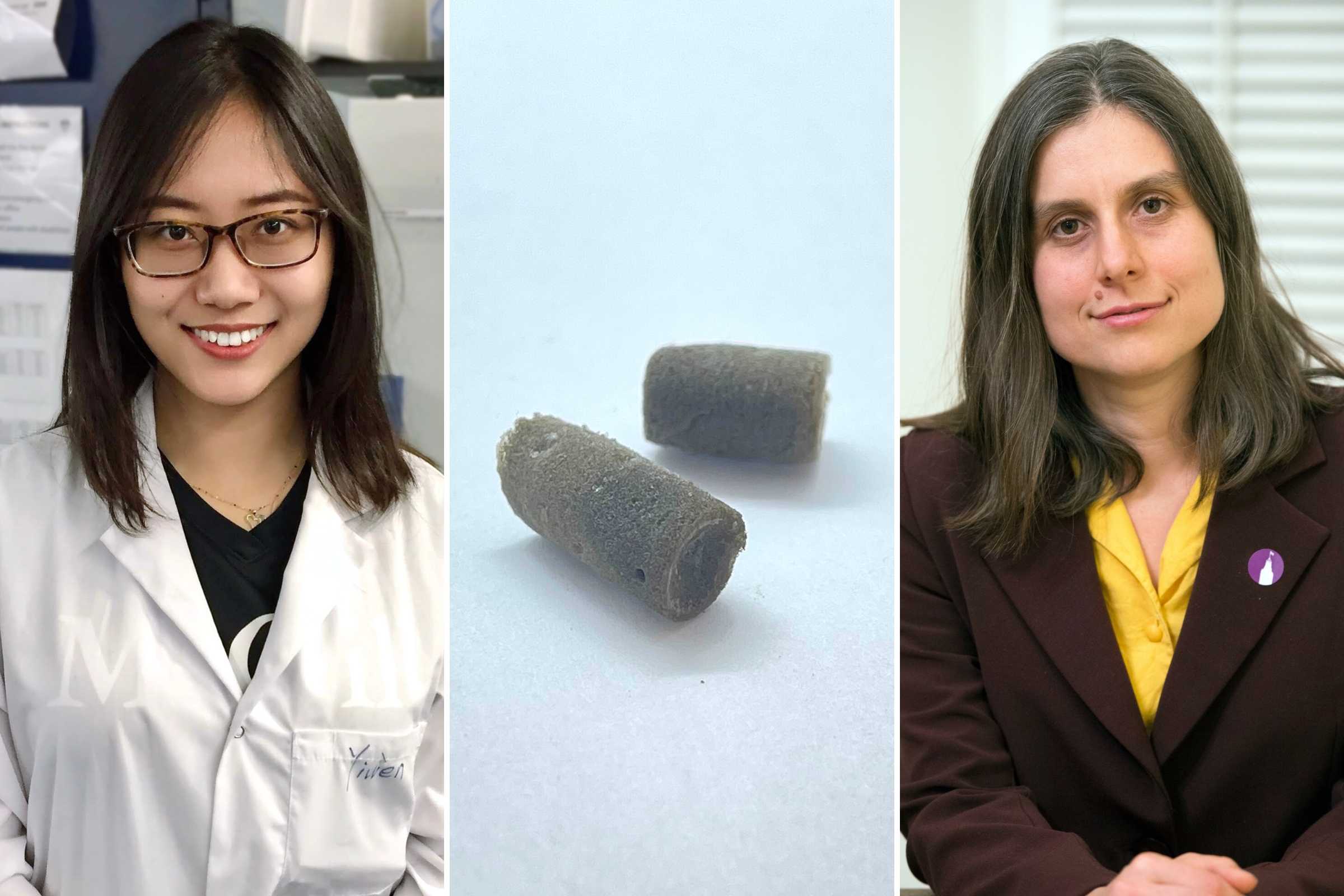
Posted on February 15, 2022News : Promising new approach to rebuild bone tissue
Over the last 30 years, the scientific community has been working to develop a synthetic alternative to bone grafts for repairing diseased or damaged bone. McGill University researchers used the Canadian Light Source (CLS) at the University of Saskatchewan to advance a novel method for growing synthetic bone tissue.
-
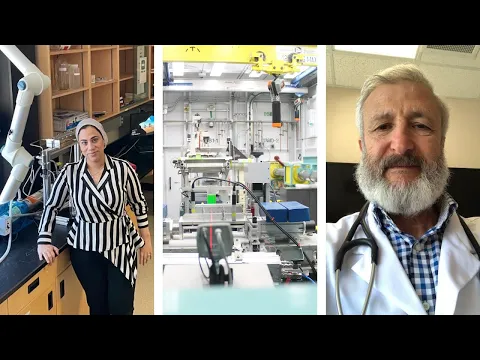
Posted on January 18, 2022News : Scientists develop new coating to protect kidney failure patients on dialysis
Researchers from the University of Saskatchewan (USask) and St. Paul’s Hospital in Saskatoon used the Canadian Light Source (CLS) at USask to help improve health outcomes for patients on dialysis.
-
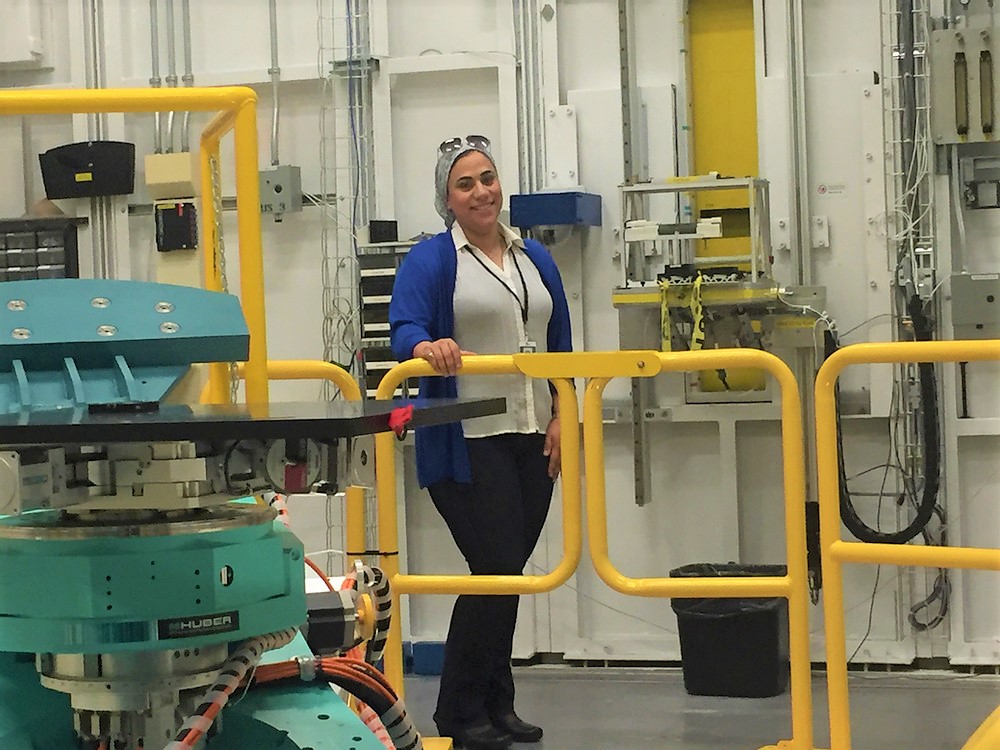
Posted on September 07, 2021News : Dairy discovery could improve dialysis design for kidney failure patients
Researchers were able to view an industrial milk-filtering membrane in a way not seen before – layer by layer at a microscopic scale, as skim milk flowed through. Their observations hold great promise for increased yields and creating new dairy products, and could even help in redesigning hemodialysis membranes, and thus patients requiring kidney dialysis treatment.
-
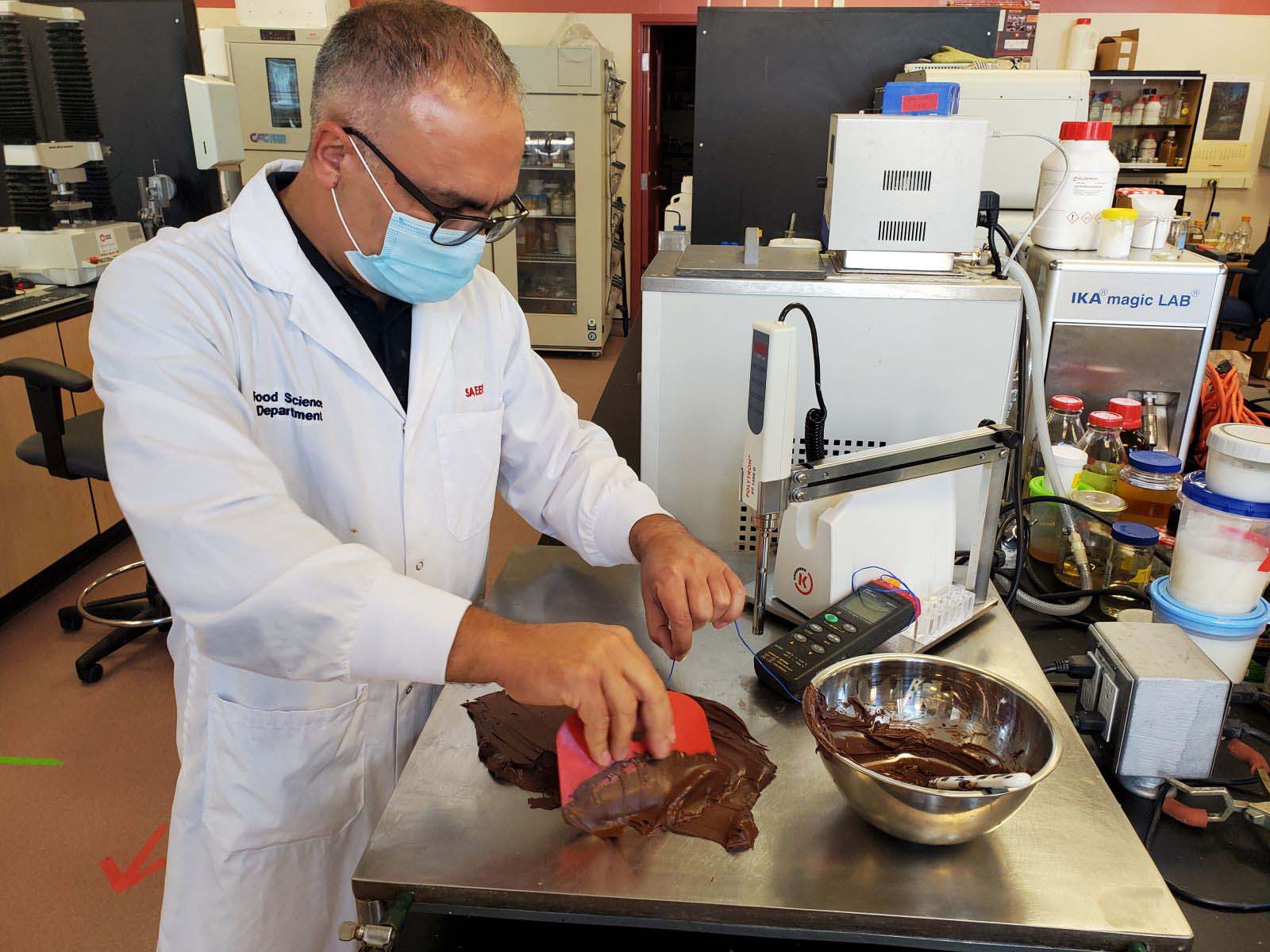
Posted on August 31, 2021News : Sweet results: Using science to make the best chocolate yet
Scientists used synchrotron technology to show a key ingredient can create the ideal chocolate structure and could revolutionize the chocolate industry. Structure is key when it comes creating the best quality of chocolate. An ideal internal structure will be smooth and continuous, not crumbly, and result in glossy, delicious, melt-in-your-mouth decadence. However, this sweet bliss is not easy to achieve.
-
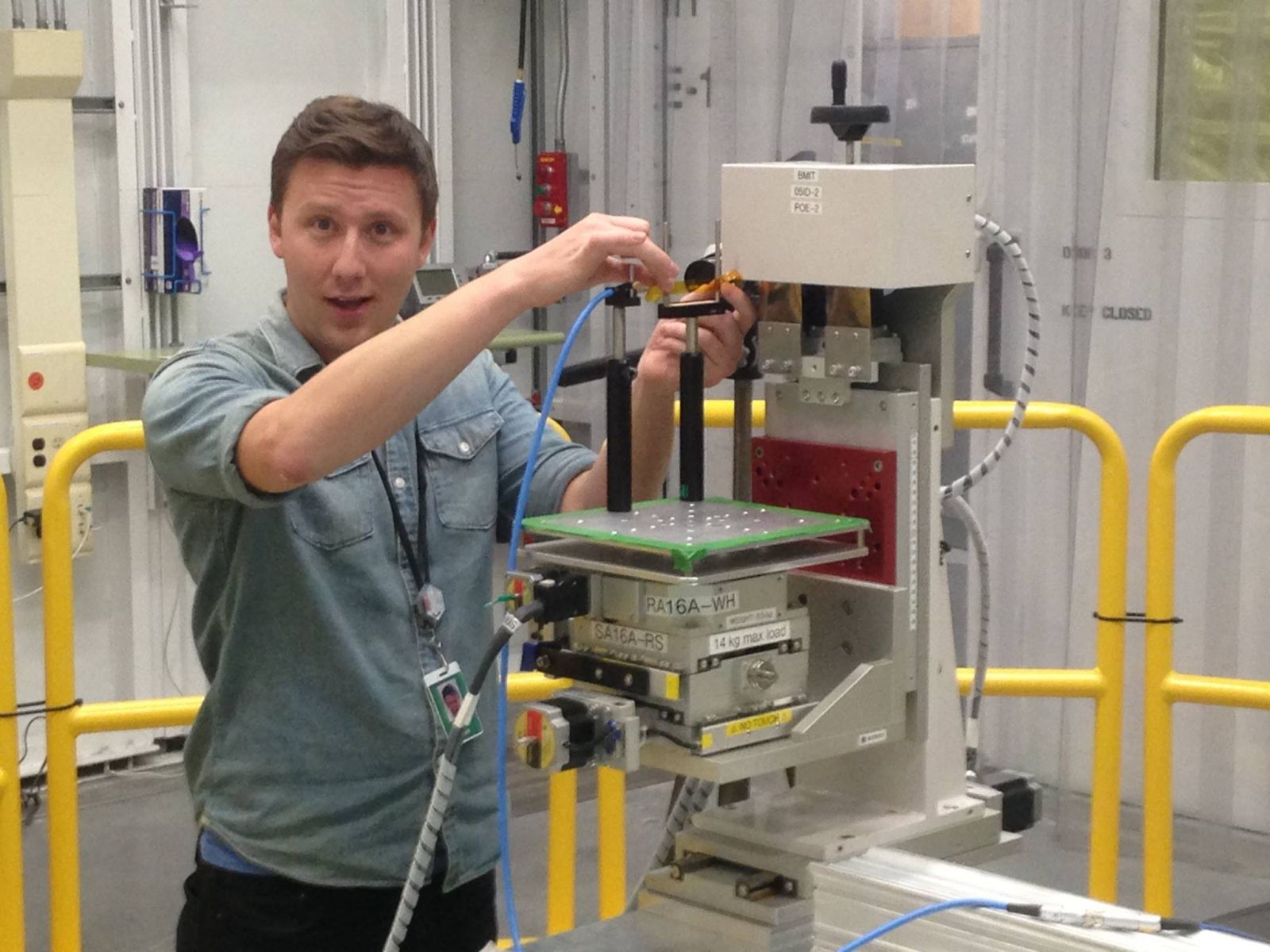
Posted on December 02, 2020News : Developing future therapies for inoperable cancers
An innovative radiation treatment that could one day be a valuable addition to conventional radiation therapy for inoperable brain and spinal tumors is a step closer, thanks to new research led by University of Saskatchewan (USask) researchers at the Canadian Light Source (CLS).Chicilo, F., et al. Physics in Medicine & Biology 65, no. 7 (2020): 075010.
-
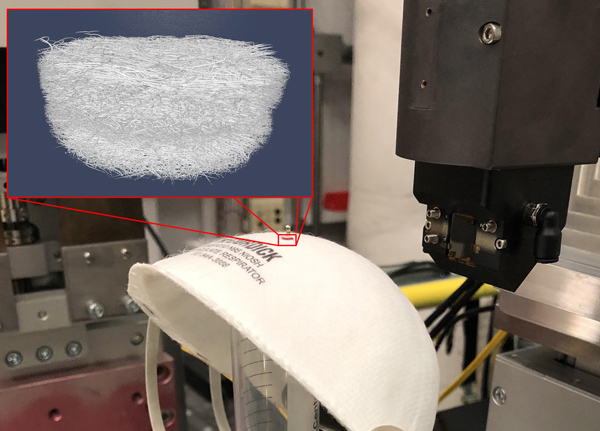
Posted on November 03, 2020News : Extending the lifespan of N95 masks
Through a collaboration between the Canadian Light Source (CLS) and the Vaccine and Infectious Disease Organization-International Vaccine Centre (VIDO-InterVac)—both national research facilities at the University of Saskatchewan (USask), scientists hope to understand the structural changes happening inside N95 respirator masks after being sterilized for reuse.
-

Posted on October 26, 2020News : Powering the future of clean energy
The global quest for clean energy is championed by researchers in Canada who are focused on harnessing the potential of hydrogen. The idea of the hydrogen economy was first proposed 50 years ago as a way to combat the negative effects of fossil fuels. Its future is the focus of new research from the University of Toronto’s Thermofluids for Energy and Advanced Materials (TEAM) lab, whose work relied on the Canadian Light Source (CLS) at the University of Saskatchewan to visualize performance.
-

Posted on February 03, 2020News : Hiring a Summer Student
We are searching for summer student to help us to construct UV cleaning box for optical components and to assist with several other beamline projects. Background in mechanical/electrical engineering or engineering physics is an asset. This position will be a full-time summer position starting on Monday, May 4th and concluding on Friday, August 28th or as discussed with the direct supervisor(s).
-
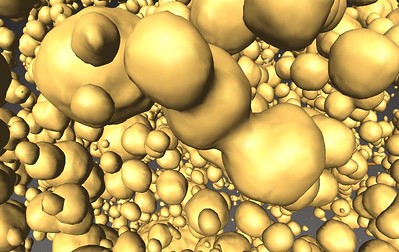
Posted on February 02, 2020News : Baking the Perfect Loaf
Ever since early humans discovered how to grind grain, the art of breadmaking has flourished and today bread is the most widely consumed food in the world. The apron has now been replaced by the lab coat as scientists seek to understand the intricacies of creating healthier, more consistent commercial bread products that meet changing consumer demands.
-

Posted on October 08, 2015News : 8-th Medical Applications of Synchrotron Radiation (MASR) conference, 5-8 October 2015
Location: Grenoble & Villard de Lans, France Date: 5-9 October 2015 - hosted by ESRF. Held every 3 years, MASR is the premier event of the international community using synchrotron radiation X-rays to perform biomedical and clinical research. We look forward to welcoming you at the ESRF and in Villard de Lans! For any information, please contact us at masr2015@esrf.fr
-
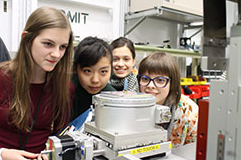
Posted on March 18, 2015News : Students on the Beamlines program continues to inspire
Government of Canada announces three-year funding Students on the Beamlines is an authentic and immersive science research experience for high school students. It is unique in that the students are the scientists in charge of their research, and they get to use Canada’s only synchrotron. Mentors help students develop research that is not demonstration, but that may produce novel information that is of interest to the scientific community.
-

Posted on August 18, 2014News : New synchrotron imaging technique reveals how cystic fibrosis makes lungs vulnerable to infection
Previously unknown component of our innate immune defense discovered University of Saskatchewan researchers working at the Canadian Light Source (CLS) synchrotron have developed a new imaging technique that reveals a hitherto unknown component of the immune system in the lungs, one that promises insights that could benefit cystic fibrosis patients. Their findings are published today in the Proceedings of the National Academy of Sciences (PNAS).
-

Posted on July 02, 2014News : An ancient killing reveals genetic anomaly
BMIT on Radio Canada International! The jaw of a Siberian man who was killed about 4,000 years ago, has revealed some interesting facts. Researchers at the University of Saskatchewan using the Biomedical Imaging and Therapy (BMIT) beamline at the Canadian Light Source synchrotron were able to study the jaw of the man to find out the details.
-
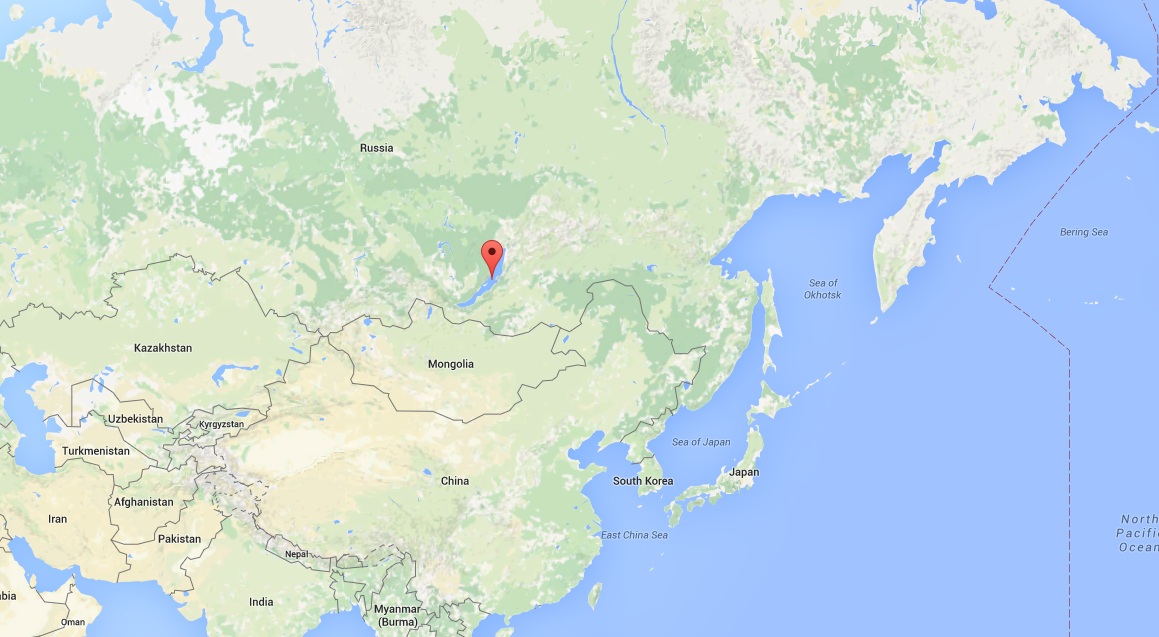
Posted on June 18, 2014News : Wrong Place at the Right Time
Siberian Bronze Age skull reveals secrets of ancient society Unlike most hunter-gatherer societies of the Bronze Age, the people of the Baikal region of modern Siberia (Russia) respected their dead with formal graves. These burial sites are a treasure trove for archeologists and one particular specimen was so unique that bioarchaeologist Angela Lieverse traveled across the world just to bring it back to the Canadian Light Source synchrotron for examination. Google Maps. Lake Baikal. Web. 30 July 2015.
-

Posted on April 30, 2014News : How to prevent osteoporosis
David Cooper, Canada Research Chair in synchrotron bone imaging His research at the CLS includes imaging human bones at a variety of scales, from across the human lifespan, noting how bones change with age and how the changes differ between genders.
-

Posted on March 06, 2014News : Say “cheese”
New look at embryonic teeth could prevent problems later in life Dr. Julia Boughner is using a new 3D imaging technique which could help prevent teeth and jaw problems through early intervention by identifying incoming wisdom teeth, crowded teeth, and malocclusion - all before they have time to start. Boughner has also used this research to look at the evolutionary development of humans through the size and shape of the mouth. She points out that our early human ancestors had much bigger teeth and jaws than modern humans.
-

Posted on January 23, 2013News : Federal Minister of State for Science and Technology Tours the CLS
Minister Goodyear in SOE-1 Minister Goodyear speaks with Josef Hormes, Executive Director of the Canadian Light Source, during a tour of the CLS on the University of Saskatchewan campus in Saskatoon, Saskatchewan.
-

Posted on April 17, 2012News : Illuminating bones
Inspiring research David Cooper wants to know more about your bones. Specifically, the assistant professor of anatomy and cell biology at the University of Saskatchewan is trying to answer a chicken-and-egg question about osteoporosis: do changes in the density of cells within bones cause the disease, or does the disease cause the changes in cell density?
-
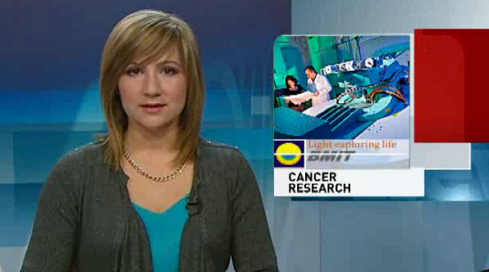
Posted on February 02, 2012News : Synchrotron used for prostate research
BMIT on CBC News Saskatchewan! Saskatoon's light source synchrotron is being enlisted in the battle against prostate cancer.
-
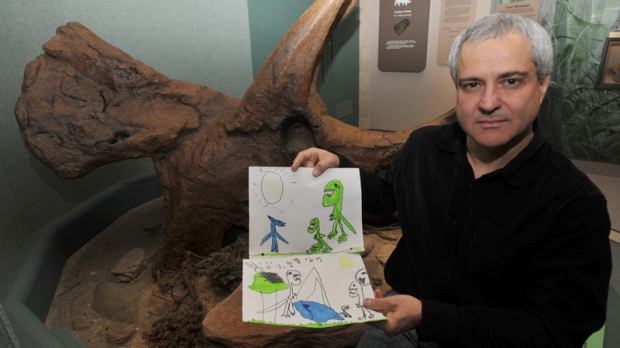
Posted on December 28, 2011News : Synchrotron gives U of R prof deeper look inside bones
BMIT on CTV News Regina! Some of the fossils he'll be looking at are from "Scotty," a Tyrannosaurus rex found in Saskatchewan in 1991.
-

Posted on January 01, 2011News : Advancing Nuclear Medicine – New U of S Initiatives
Saskatoon- a center of excellence for nuclear medicine Building on its history of excellence in medical physics and accelerator technology, the University of Saskatchewan is well-positioned to lead the country in nuclear medicine, playing a lead role in biomedical imaging and nuclear research, development and training.
-

Posted on December 31, 2010News : Medical Research for a Healthier Future
Synchrotron Pushes the Limits of Medical Research A common theme among the research projects at BMIT is that they enable scientists to “see” what is going on in living systems at levels never before imagined. Greater accuracy, detail, sensitivity – all of these are pushing the boundaries of medical imaging. The resulting insights could be used to develop new diagnostic techniques and treatment protocols for some of today’s greatest health challenges.
-

Posted on October 08, 2009News : City Hospital Foundation pledges support for beamline research
Thank you! Saskatoon City Hospital Foundation announced today a gift of $500,000 to help establish two biomedical beamlines at the Canadian Light Source synchrotron. “Our gift represents our commitment to supporting collaborative efforts in clinical care, research and teaching,” said Foundation Chair, Don George. “The two beamline facilities will advance research in two areas of particular interest to the Foundation – breast health and multiple sclerosis.”
-

Posted on December 23, 2008News : First images from medical beamline at Canadian Light Source
A beautiful mouse A University of Saskatchewan (U of S)-led research team at the Canadian Light Source (CLS) synchrotron has received an early Christmas present. After several years of research, construction and testing, the unique-in-North-America BioMedical Imaging and Therapy facility (BMIT) captured its first X-ray images.
-

Posted on March 20, 2006News : Province of Saskatchewan provides over $6 million for synchrotron beamline
Thank you! The University of Saskatchewan (U of S) received more than $6.2 million today from the province’s Innovation and Science Fund for the Biomedical Imaging and Therapy beamline (BMIT) at the Canadian Light Source synchrotron. The funding matches federal funding provided by the Canadian Foundation for Innovation.
-

Posted on January 01, 2006News : 05ID-2 circa 2006
An early CAD model Showing the POE-2 control room, POE-3, & SOE-1.
-
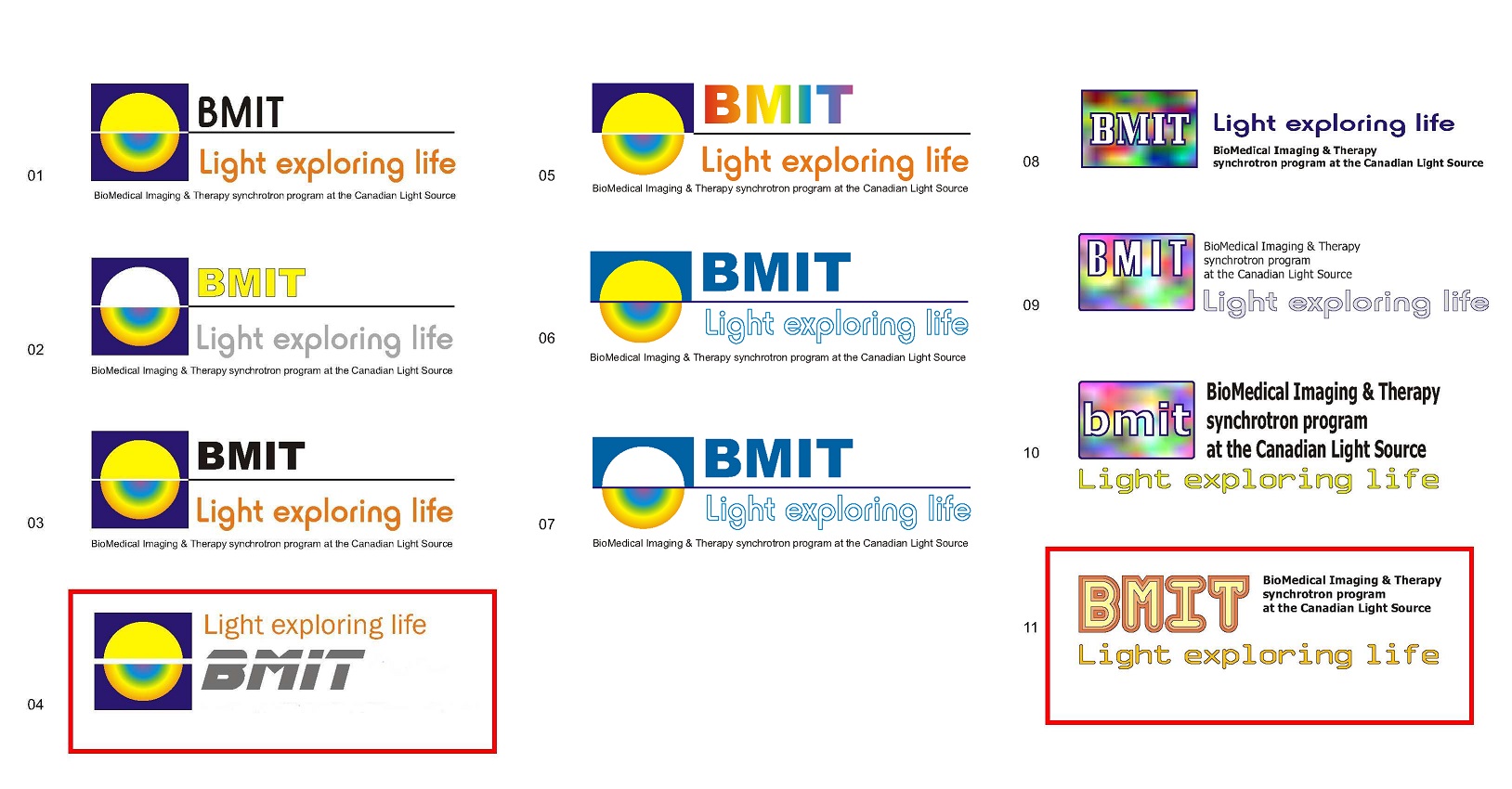
Posted on November 21, 2005News : Logo Contest
A fierce contest was held, and finalists were chosen from a battlefield littered with shattered hopes and dreams... You can see for yourself what the results were once all the votes came in. If the font of the winner looks familiar, it's because the font is from Blade Runner.
-
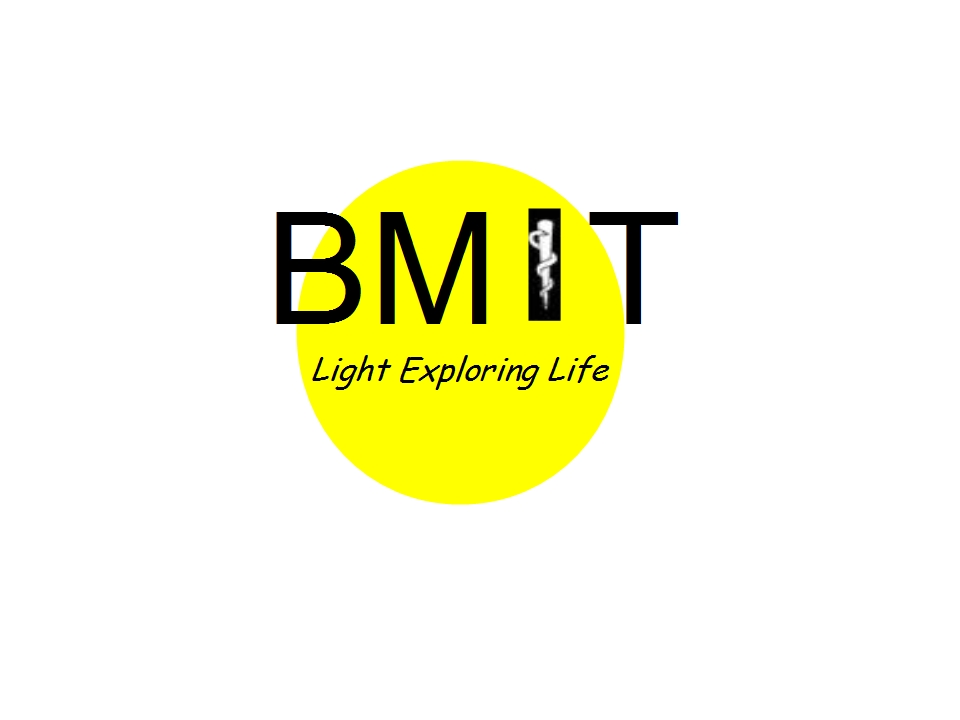
Posted on November 17, 2005News : The Competition
One of the proto-competitors in the race to find a new logo Evidently, this one was influential.
-
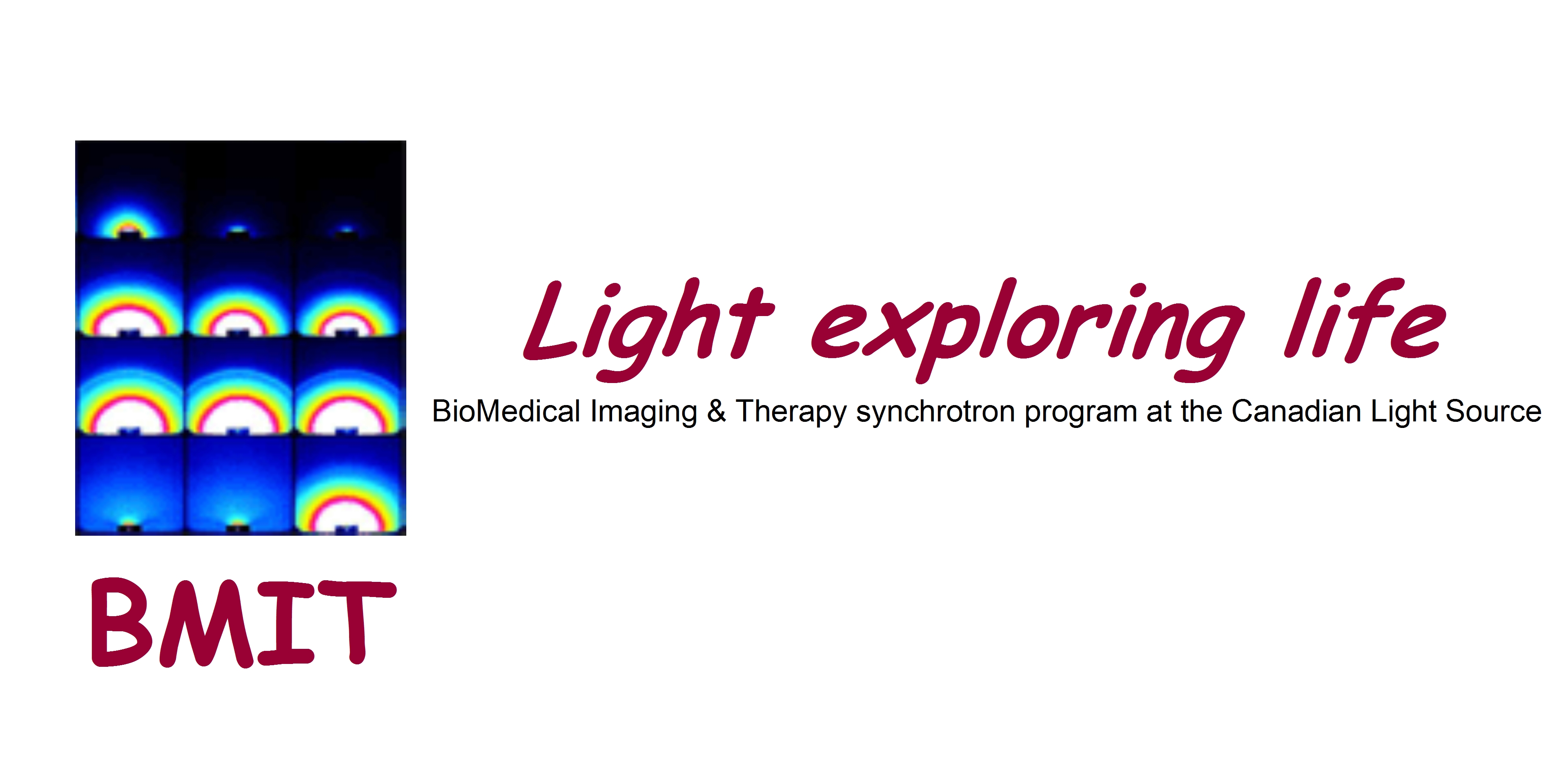
Posted on November 17, 2005News : BMIT logo, circa 2005
THE original BMIT logo It was subsequently replaced by means of democratic process.
-

Posted on December 31, 2003News : The BioMedical Imaging and Therapy Research Beamline at the Canadian Light Source
BMIT in The Canadian Veterinary Journal! The energy of the photons spans the entire electromagnetic spectrum from far infrared to hard X-rays, and their brightness is approximately 106 brighter than the surface of the sun and 1010 brighter than conventional X-ray sources. The BioMedical Imaging and Therapy (BMIT) beamline may be the most interesting for veterinary scientists, because it will be the only beamline at the Canadian Light Source designed to accommodate live animals.